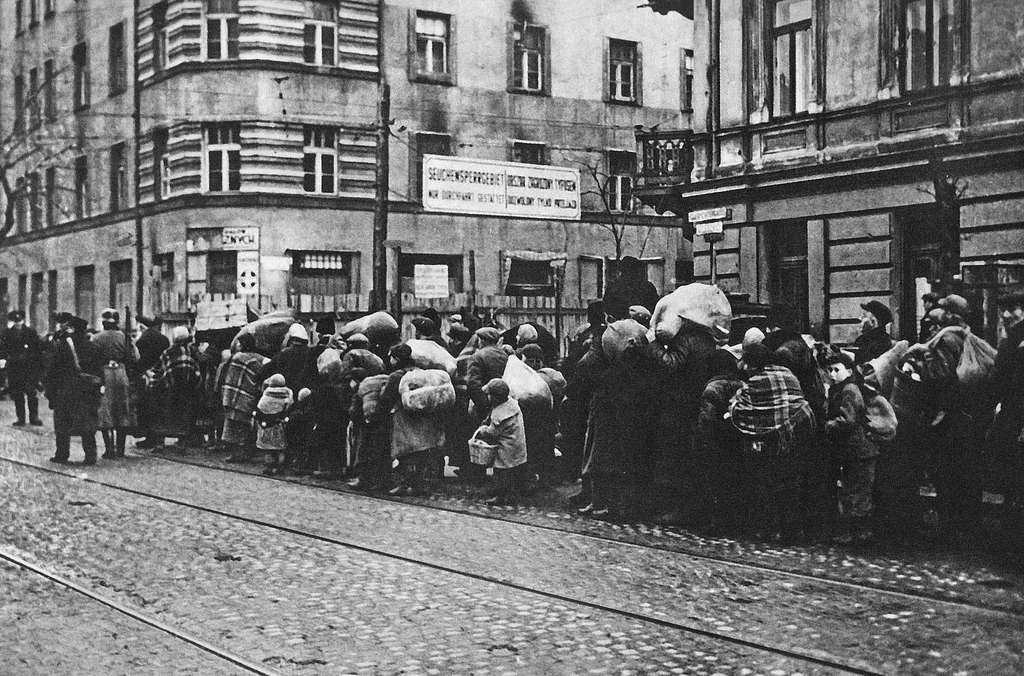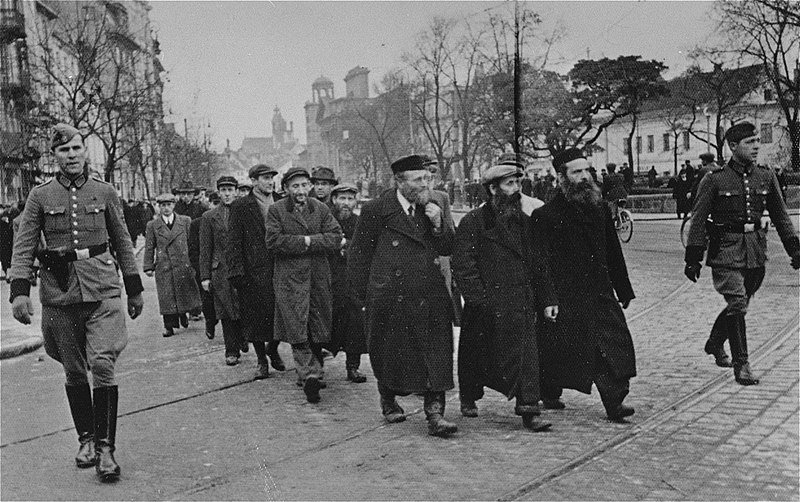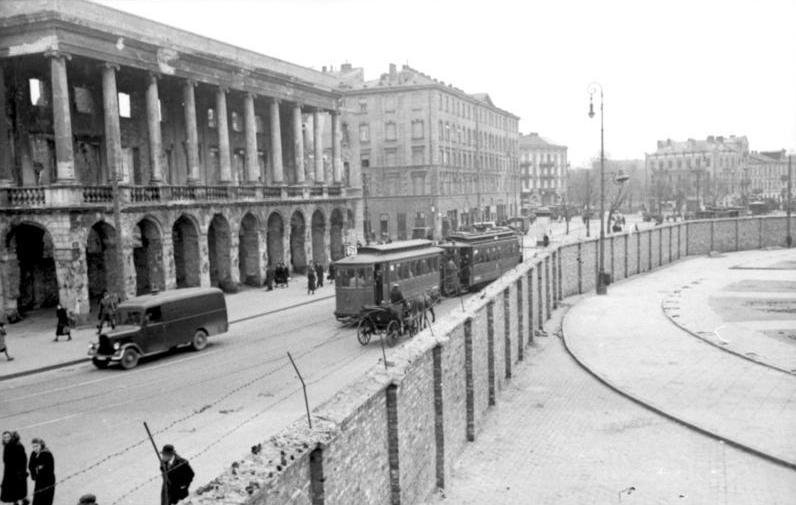Introduction
The Warsaw Ghetto Uprising began on April 19, 1943, and was the largest act of Jewish resistance during the Holocaust. The uprising began in response to the final push by Nazi Germany to liquidate the ghettos and take the remaining prisoners to the death camps at Majdanek and Treblinka. Over 7,000 Jews were killed during the uprising and another 42,000 were deported to concentration camps.
Resettlement of Jews to the Warsaw Ghetto (c. 1940) Source: WikiCommons
The city of Warsaw was a major center of Jewish life and culture in Poland before World War II. With an estimated population of more than 375,000, the Jewish community constituted around 30% of the population in Warsaw before 1939. According to the USHMM, the “Warsaw Jewish community was the largest in both Poland and Europe, and was the second largest in the world, second only to New York City.” When Nazi Germany invaded Poland, September 1, 1939, Warsaw faced heavy military assault and was seized by the Nazis after 26 days of fighting. Immediately, the Nazi regime began to implement anti-Jewish decrees including the established of the Judenrat (Jewish council), identification orders, and finally the establishment of the Warsaw Ghetto.
Invasion of Poland
September 1, 1939
Hitler watching German soldiers march into Poland in September 1939. Source: German Federal Archives
The invasion of Poland continued the acquisition of Lebensraum “Living Space” following the Anschluss “annexation of Austria” and occupation of the Sudetenland, both in 1938, and the annexation of Czechoslovakia in 1939, which broke the Munich Agreement. Despite the remilitarization of the Rhineland 1936, which ignored conditions of the Treaty of Versailles, and the breaking the Munich Agreement with the annexation of Czechoslovakia, Adolf Hitler and the Nazi government did not face any military response from other nations.
By 1939, Poland was partially surrounded by German controlled territories and was in a vulnerable position to invasion by Nazi military forces. In March of 1939, Great Britain and France pledged military support to Poland should Nazi Germany invade. In August 1939, the Nazi-Soviet Pact was established and pledged peace between Germany and the Soviet Union for ten years. The Pact also secretly divided Poland between the two nations. Hitler was now free to invade Poland without the threat of a Soviet counterattack, which he did on September 1, 1939.
On September 3, 1939, Britain and France declared war on Germany. The invasion of Poland, subsequent declarations of war, officially began the Second World War.
Map of the Fourth Partition of Poland. Source: WikiCommons
Just 16 days later, the Soviet Union invaded Poland from the east and ended on October 6, 1939 with the complete annexation of the Second Polish Republic by the Soviet Union and Nazi Germany. Divided mostly along the Curzon Line established in 1919 at the end of the First World War between Poland and the Soviet Union, the areas of Poland that were under Nazi control were faced with deportation and extermination of the non-German population. Beginning in October 1939, many Poles were expelled from their homes to make room for German colonizers and by 1944 an estimated 16 million Poles were expelled by the Nazi regime.
The Nazi plan also called for the extermination of the 3.3 million Jews living in Poland. A network of Nazi concentration camps and killing centers were established in Nazi-controlled areas, many of them in occupied Poland.
Warsaw Ghetto
October, 1940
Roundup of Jewish men for forced labor by the Order Police battalions (March 1940). Source: USHMM
Construction of the ghetto walls began on April 1, 1940. The walls were built to encompass the area of Warsaw that predominantly inhabited by Jews and was supervised by the Judenrat. Ethnic Poles were expelled and 138,000 Jews were forced to relocate into the ghetto. On October 16, 1940, the Nazi officials announced the official establishment of the Warsaw Ghetto. Initially, there were 450,000 people confided to an area of 307 hectare, which was about 2.4% of the geographic area of Warsaw. Almost one month later, on November 15, 1940, the Warsaw Ghetto was closed to the outside with a 9.8 foot wall that was topped with barbed wire. Individuals that attempted to escape the ghetto faced execution on sight from the guards. Overtime the physical size of the ghetto was reduced as the population decreased through disease, mass starvation, and executions.
Brick wall of the Warsaw Ghetto dividing the Iron-Gate Square, with view of bombed out Lubomirski Palace (left) on the "Aryan" side of the city (May 1941). Source: German Federal Archives
Warsaw Ghetto wall and footbridge over Chłodna Street (1942). Source: WikiCommons






